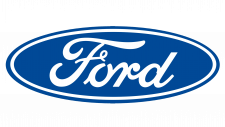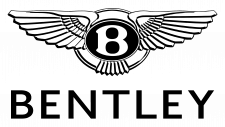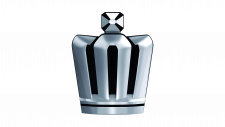Vauxhall Logo
Vauxhall stands as a prominent British automobile brand. Alexander Wilson founded it. Its birthplace lies in Vauxhall, London. Initially, it catered to marine engines. Over time, Vauxhall evolved, focusing on producing vehicles for the public. The brand symbolizes British engineering prowess, merging innovation with tradition. Vauxhall’s journey from marine to automotive manufacturing showcases its adaptability and commitment to excellence.
Meaning and history
Vauxhall’s journey began in 1857, marking its establishment as a pivotal player in the automotive sector. By 1903, it had transitioned into automobile manufacturing, leaving a significant mark with its first car. The year 1925 became another landmark when General Motors acquired Vauxhall, broadening its global influence. Throughout the decades, Vauxhall has maintained a strong presence in the automotive industry, adapting to changes and introducing innovative models. Its legacy is a testament to enduring quality and British craftsmanship.
What is Vauxhall?
Vauxhall is a distinguished automotive brand from the UK. Known for its rich heritage and innovation, it offers a range of vehicles to suit various needs. Synonymous with quality and reliability, Vauxhall continues to be a favorite among British drivers and beyond.
1857 – 1983
The logo features a mythical creature, a griffin, perched with authority. It holds a flagstaff, adding to its regal bearing. The griffin’s wings are spread wide, symbolizing strength and freedom. Its head is turned slightly, exuding a sense of watchfulness and pride. The flag carries the letter ‘V’, the brand’s initial, emphasizing its identity. This emblem’s stark black silhouette against a plain background offers a timeless, distinguished look. The design speaks of legacy and confidence, with the griffin serving as a protector of the brand’s storied history.
1983 – 1989
In this iteration, the griffin retains its proud stance within a bold red square. The contrast is striking, making the figure more pronounced. White outlines define the mythical beast, highlighting its features against the vivid backdrop. The word “VAUXHALL” sits boldly below, its font clear and assertive. The logo has shifted from a monochromatic scheme to a duo of red and white, energizing the brand’s visual identity. This redesign adds vibrancy and modernity, projecting the brand’s evolution while respecting its heritage.
1989 – 2003
The griffin now resides within a perfect circle, signaling unity and focus. The red remains vivid, but the beast’s stance has softened, curving with the emblem’s roundness. Below, “VAUXHALL” is spelled in solid, grounded letters, giving a balanced and modern feel. This logo iteration simplifies and streamlines, moving towards minimalism. It reflects a contemporary edge, yet the griffin’s heritage remains at the forefront, ensuring brand continuity. The logo has transformed, mirroring the evolution of Vauxhall’s brand philosophy.
2003 – 2008
This logo rendition adds a 3D effect, bringing the griffin to life. The creature is now silver, etched against the red oval. Shadows and highlights play on its form, adding depth. This dynamic approach gives the griffin a more modern and tactile presence. The letter ‘V’ atop the flag now stands out in crisp detail. The overall design retains the emblem’s core elements but injects contemporary vigor and dimensionality. It’s a bold step forward, fusing tradition with modern design techniques.
2008 – 2013
The logo has undergone a sleek transformation, now enclosed in a chrome circle. The griffin’s profile is more abstract, a silhouette merging with the letter ‘V’. It’s a blend of emblem and initial, suggestive rather than explicit. This minimalist design is futuristic, emphasizing elegance and a new direction. The name ‘VAUXHALL’ arches gracefully above, its font streamlined. The metallic finish and embossed style convey sophistication, a departure from previous flat designs. It’s a bold leap into modern branding, where simplicity speaks volumes.
2009 – 2011
Color returns to the griffin, now a silver figure against a circular red field. This return to classic color highlights the brand’s heritage. The ‘V’ remains integrated with the griffin, both encased in chrome. The typeface of “VAUXHALL” below is modern, with a clean and straightforward style. This logo marries the classic with the contemporary, featuring 3D effects for a more pronounced and engaging emblem. The design echoes a renewed commitment to blending tradition with forward-thinking aesthetics.
2011 – 2020
The 2011 logo maintains the circular, chromed motif, but enhances the griffin’s detail within the red disc. The use of shading and light effects on the griffin gives a more three-dimensional and lifelike appearance. This logo version communicates a stronger, more dynamic presence, suggesting motion and agility. The brand name ‘VAUXHALL’, in a sans-serif font, is clear and unfaltering below the emblem, reflecting a modern, streamlined approach to the company’s identity. The design evolution here leans into a future-focused brand while respecting its storied past.
2020 – Today
The latest logo opts for a return to a flat design, forgoing the previous 3D chrome effects. The griffin and ‘V’ appear in a stark red silhouette, enclosed by a simple oval. The emblem is stripped down to its essence, a nod to minimalist design trends. This iteration is a bold contrast to the previous metallic complexity. It conveys clarity and a focus on the essentials of the brand identity. The design is a confident step towards modern simplicity, making the logo easily recognizable and versatile for digital and physical applications.



















